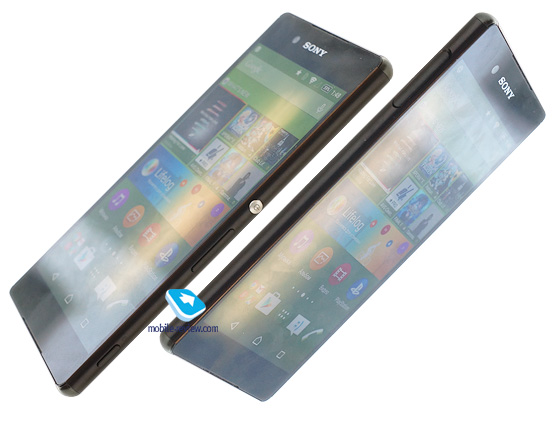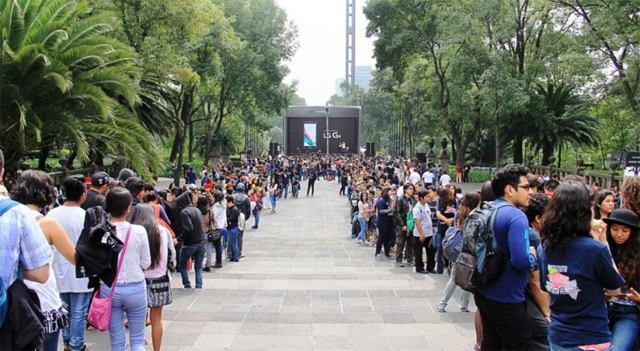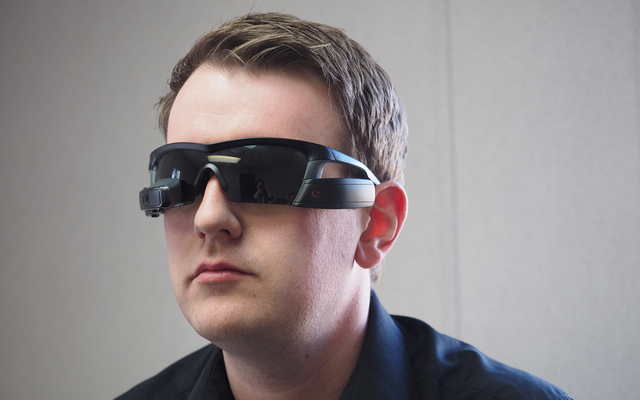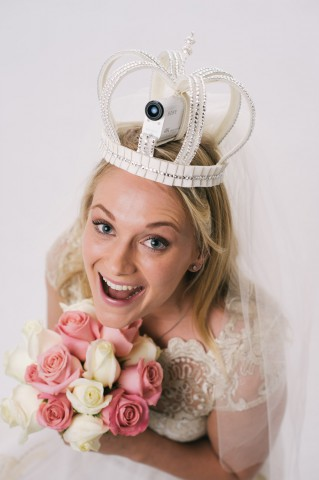About the fabulous fork and real consequences, the problems of Sony Xperia Z4 and Meizu M2 Note, the chance to see Android a smartphone from BlackBerry, a 'smart' wedding veil from the Royal Family and the Google Medical Bracelet, and the winners of the iPhone Photography Awards.

Nothing lasts forever under the moon, and for every, even the largest and most famous company, one day hard times come. And she turns out to be at a crossroads, where she needs to choose which road to go further. And from all the information about the further path – only a guiding stone with a half-erased inscription: 'You will go to the left – you will never find money, you will go straight – you will reap the fruits of your laziness, if you go to the right – you will go to hell in the teeth.' It may very well be that this is always the same stone and the same intersection, which one day everyone is destined to get. And if you look closely, you can even make out the inscriptions 'Nokia was here', 'Siemens passed here' and 'Sony Ericsson forever!'

One way or another, the company's choice here is small and, frankly, by no means enviable. You can go left, trying to keep the market share to the last, desperately dumping and selling devices almost below the cost price. You can continue to go straight, stubbornly continuing to pretend that everything is under control, releasing uninteresting devices for big money and losing their last fans. And you can turn right, getting involved in a ridiculous adventure with a difficultly predictable outcome. There, you can get rich, and you can throw back your hooves, and the chances of a second outcome are much greater. And it seems, and already, in fact, there is nothing to lose, how the matter will end, and so it is clear, but only to live, you still want to. Let it last at least a year or two, but who knows, what kind of miracle will happen? So it turns out that rarely anyone chooses the right road. Basically, everyone is on the left and on the central one.
Shut Up And Take My Money!
How to get customers to buy a new smartphone? How should the new flagship differ from the old one? Every year the answer to this question is less and less obvious. Once upon a time, we could talk about a new set of programs or a new version of the operating system, but that was even before the app stores and updates via Wi-Fi were put in one click. Previously, it could have been a new design of the device, but the designers of the companies stopped surprising us with something like that, the new flagship is usually very similar to the previous one. Until recently, it could be some fundamentally new capabilities or a qualitatively different hardware – but gradually the fantasy ends even in Apple. Let's say you can still add 4 GB of memory and 2K screens to smartphones, but then what? For a while, the last desperate argument was the 'parrots' that the new flagship was typing in synthetic tests. But it seems that now the time has come to forget about him.
It's a Sony
The Sony Xperia Z4 smartphone, better known by the bashful pseudonym Sony Xperia Z3 +, can serve as an excellent illustration of this bleak picture. Outwardly, it practically does not differ from its predecessor, and everyone has long come to terms with this. In the end, the Sony Z3 is quite a beautiful phone, even if it looks like two drops of water to its many predecessors. And a smartphone is, first of all, a technical device, not a fashionable accessory, so should we attach so much importance to its appearance?

The trouble is that on the technical side, there is definitely nothing to please us with the new flagship either. Yes, instead of the Snapdragon 801 processor, it received the 64-bit Snapdragon 810. So what did this give users? In the beginning – the problem with overheating. And after solving it, the performance is at the level of last year's device. In any case, such a conclusion can be drawn from the tests published on Phonearena.
[iframe url = '// www.youtube.com/embed/x8BgIB-6NPM' width = '640 ″ height =' 360 ″ scrolling = 'no' frameborder = '0 ″ marginheight =' 0 ']
What's the bottom line? Zero and one in the name of the processor have changed places, and that's all for now. Differences will have to be looked for under a magnifying glass, and who knows which device will be preferable as a result. Especially considering the expected price – 46,990 rubles. Why is Sony's already half-dead mobile unit shooting itself in the legs so diligently, I don't quite understand, but maybe there really is some higher meaning in this? Sony Ericsson in this situation fought to the end, trying not to give up and come up with interesting smartphones. You can't say the same about Sony.
Apparently, some manufacturers in the coming years may experience a creative crisis, when the old schemes for “improving” flagships no longer work, and no one bothered to come up with new ones. Someone will be able to gather strength and make a powerful leap forward, while others will continue to go with the flow until the last minutes.
Link to news
Progress in Chinese
Not only Sony is experiencing problems with 'parrots', it's just that other companies try not to focus on them, enticing buyers with something else. For example, a new design or a low price.
[iframe url = '// www.youtube.com/embed/LvZjgEis6qI' width = '640 ″ height =' 360 ″ scrolling = 'no' frameborder = '0 ″ marginheight =' 0 ']
An example is the smartphone Meizu M2 Note, which scored even fewer points in synthetic tests than its predecessor. Let me quote a review by Roman Belykh:
The Quadrant test [on Meizu M2 Note] 'knocks out' 15667 points, and the same test in M1 – 14518 points. Antutu test in M2 – 31116 points, in M1 – 40607 points.
Unlike the Sony Z4, the Meizu M2 Note has a number of its distinctive features – support for 4G, a mechanical center key, different ergonomics, a memory card slot, an affordable price finally … but will that be enough? Indeed, in total, last year's version Meizu M Note looks at least as good.
Link to news
Minute relief for BlackBerry
Unlike other companies, BlackBerry still has a fail-safe way to grab the attention of users … at least for a while. True, the trivial way is to release a smartphone for Android.

Once upon a time Nokia found itself in a similar situation, but the Finnish company then decided to go its own way, and not blindly follow the crowd. The vice president of the company then called the possible transition to Android only a temporary solution, comparing it with the actions of Finnish boys who are used to warming up in a not quite traditional way:
Using this operating system is like peeing in your pants, as Finnish boys do to keep warm. It would bring a momentary relief, but it didn’t get rid of future problems.
We are not destined to know whether Ansi Wanyoki was right or not – other forces came into play, which directed the development of the company along a completely different path, and Wanyoki himself soon left the company.
But now we can see what happens with BlackBerry, which, on the contrary, is seriously considering switching to Android. Representatives of the company have already mentioned this opportunity a couple of times, but nothing specific was said.
Apparently, every day the scales are tilting more towards the green robot. In any case, this is how the recent phrase of the company's CEO can be interpreted:
We always monitor the safety of our devices, smartphones BlackBerry have always been distinguished by their reliability. If we find a way to make an equally secure smartphone on Android, then we will definitely use it
Something tells me that the choice has already been made and marketing games have begun to show how seriously the company takes the safety and protection of its customers. Otherwise, it is unlikely that management would have missed the chance to tell everyone how much better the OS BlackBerry than the 'leaky' one Android.
It would be interesting to look at smartphones BlackBerry running on Android. Moreover, this is a real chance to get sliders or monoblocks with a physical keyboard. Not that BlackBerry here someone was waiting with open arms, but it seems to me that new (or rather, old and long forgotten) form factors can really play a role.
Link to news
Art accessible to all
Maybe it's time to take a break from the performance race and finally draw users' attention to what exactly they are holding in their hands? To interest them in scenarios for the use of technology, and not faceless 'parrots' in synthetic tests?
In any case, Apple have been doing this for a long time, unobtrusively emphasizing the opportunities that iPhone gives its users. Consider only the iPhone Photography Awards (IPPA), which is considered almost none of the most prestigious in the world of mobile photography. Looking at some photos, you involuntarily catch yourself wanting to try to learn how to shoot in the same way. After all, there are no technical and financial barriers here – the photographers had the most ordinary smartphone in their hands.









I have cited only a few winning works from a couple of categories; the rest can be found on the official IPPA website.
Link to news
LG are also trying to emphasize the possibilities of mobile photography that their smartphones give customers. However, while the emphasis is on selfies.
Recently, their smartphone LG G4 even got into the Guinness Book of Records – it was with its help that they managed to make the longest series in history. The record was set this month in Mexico City, where 746 selfies (both group and solo) were taken in 2 hours, and about 2500 people participated in the filming.

According to company representatives, the battery charge would be enough for more, but they simply ran out of people who wanted to be photographed.
Link to news
About [not] smart devices
I don't know if companies are worried about the further development of mobile phones or if they just don't want to put all their eggs in one basket, but more and more manufacturers are becoming interested in wearable electronics.
First of all, this is a 'smart' watch that only the lazy has not released. This idea lies on the surface, it is not difficult to implement, but how profitable this niche will be is still an open question. The current models of such watches are not amazing, whether it will be possible to make something really interesting out of them in the future, it is not clear.
But there are other types of wearable electronics. For example, smart glasses a la Google Glass. This is a practically unplowed field, on which there may be both completely unsuitable for sowing soil, and the rarest quality black soil. And if you are very lucky – so will the diamond deposits.
Not all companies are ready to seriously invest in this area, but this is the case when quality is more important than quantity. So, recently a company Intel joined the club of inventors of 'smart' glasses, which bought Recon Instruments for this purpose.

It is interesting that these two companies began to cooperate long before the merger. Back in 2013, Intel decided to invest a very substantial amount in the development of Recon Instruments, which, according to experts, could be about $ 175 million. Apparently, such a generous investment paid off, otherwise the merger would hardly have taken place.
Link to news
At the moment, even the value of smart watches raises certain doubts, and what smart glasses should be is not at all clear. But whatever they turn out to be in the end, there will definitely be a certain demand for them. The companies have been very successfully stirring up the interest of users in this idea for several years, and now even if they offer to tie a webcam to the arch of glasses using ordinary tape, there will be those who want to appreciate such an 'invention'.
Actually, it is with such projects that some developers try to get out into the light from time to time. After all, so far no one can offer anything else, and there is already some demand, even if it is small, for such things. What Google Glass has convincingly proved is that people were ready to buy and wear even their early prototypes.
Recently, the well-known company Sony, together with headwear designer Rosie Olivia (who creates clothes for members of the British royal family), presented a series of 'smart' headwear called Bride's Eye View. As the name suggests, their main function is to capture the wedding as the bride herself sees it.
The first accessory looks like a crown, the second is a wedding veil. Both are equipped with a Sony Action Cam, which will be used to record the ceremony.
This is how 'devices' look like in real life.


And this is how the photos will look.


What can you say in the end? Google Glass isn't the worst option yet, and amateur selfies aren't the most hopeless kind of photography.
Link to news
Google itself, meanwhile, does not focus on smart glasses and watches alone. Within the walls of the Google X laboratory, many more promising projects are being developed, one of which is a medical bracelet.
Sometimes there is a feeling that the health of the patient is more interested in the doctor than himself. Calling a doctor at home or coming for a medical examination at a medical institution, the patient believes that he has already done his part of the work. At the same time, he cannot even coherently explain where he has what hurts, how the malaise manifests itself, what temperature he had at the time of the illness, whether the pressure increased, whether the heartbeat increased, etc. Needless to say, all this does not contribute to the diagnosis and treatment of the disease.
The task of the Google bracelet is not only to measure the patient's physiological data (pulse, heart rate and temperature), but also to record the parameters of the external environment: the level of light, noise, and so on.

At the moment, employees of the Google X laboratory plan to enlist the support of a number of medical institutions and start calibrating the device. And there – who knows. Perhaps one day such a bracelet will become for doctors the same familiar thing as a thermometer or a tonometer.
Link to news

